Catalytic Converter Glowing Red Hot
Is your car running rough, the engine shakes, and the catalytic converter seems too hot and glows red? Your check engine light should be on, too, and if you read the codes, you will find an engine misfire fault code. The car feels like it has lost power; you notice poor fuel economy, poor performance, and inadequate throttle response. You open the hood and see the Catalytic Converter Glowing Red. This article will discuss the most common problems causing the catalytic converter or exhaust manifold to overheat.
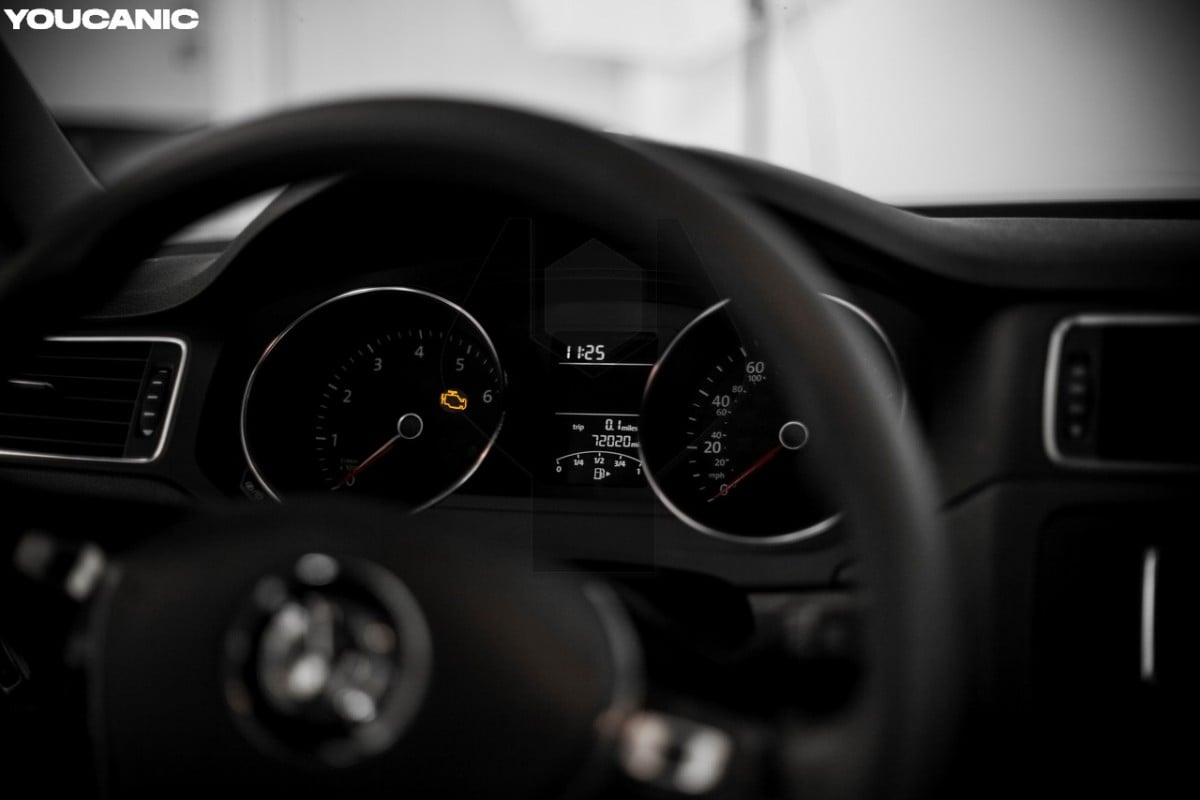
If the catalytic converter is glowing red hot, the first thing that most people think is that the catalytic itself is clogged, but that is not always true.
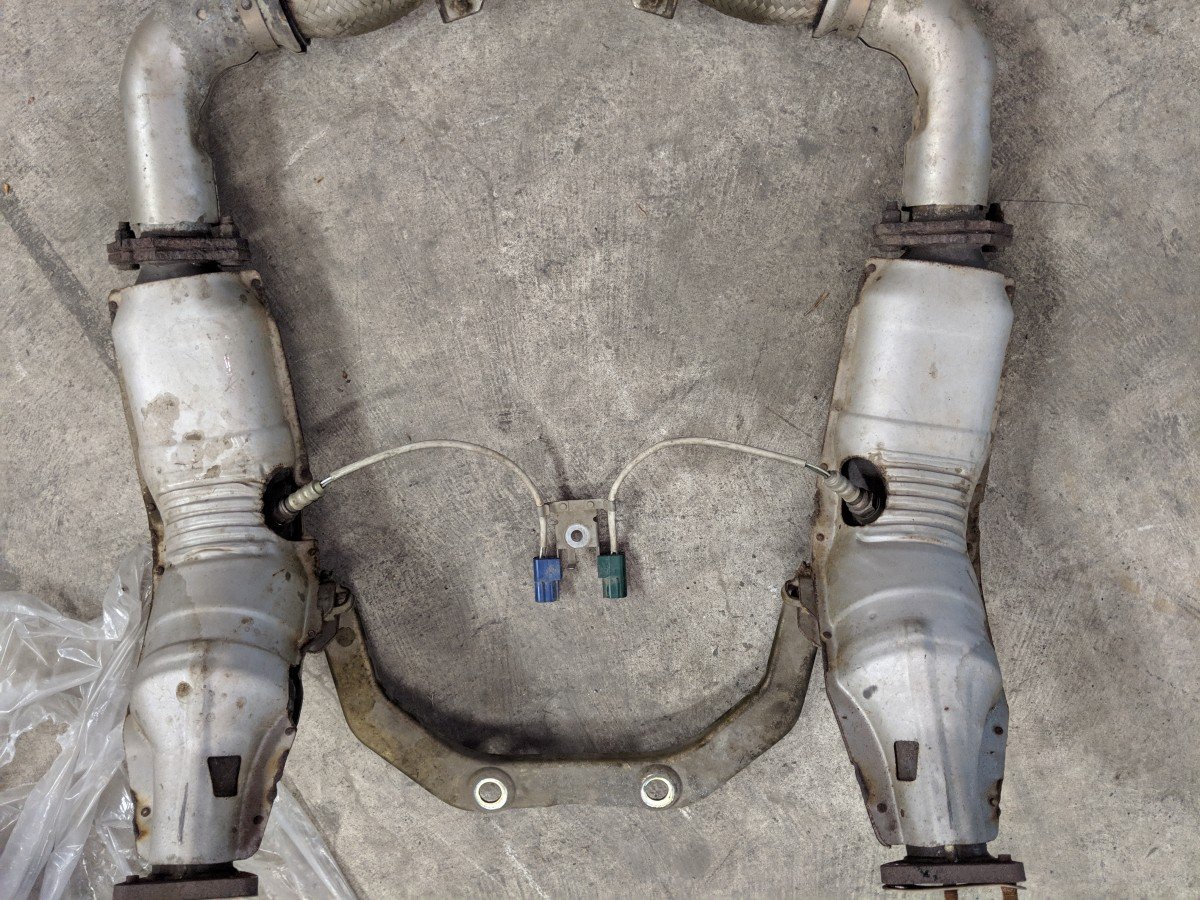
We had seen cases when a mechanic changed the catalytic converter, thinking it was clogged because it glows red. While that is possible, if the catalytic converter is glowing red hot, it doesn’t always mean it is bad. After spending several hundred dollars on a new catalytic converter, the new catalytic converter is still overheating. Those problems are caused by an underlying engine problem, which sends unburned fuel to the catalytic converter.
Why is my Catalytic Converter Red/Hot?
The catalytic converter is meant to burn off a minimal amount of leftover fuel from the engine. However, if an excessive amount of fuel is introduced into the exhaust, the converter will burn this, leading to overheating and a red-hot glow. This is not sustainable and can cause damage to the converter.
Sure, one possibility is that it can be clogged. Another common reason why a catalytic converter glows red is that raw fuel is getting into the catalytic converter and is getting burned there. For example, if you have a cylinder misfire due to a bad spark plug or ignition coil.
Common Causes

A catalytic converter can turn red hot due to an overabundance of fuel burned in the exhaust system. This occurs when excessive hydrocarbons are introduced into the exhaust, causing the converter to work harder to burn off the excess fuel. The increased burning creates excessive heat, leading to a red-hot glow. However, this intense heat can damage the converter and is not a sustainable condition. It’s important to maintain proper fuel levels and engine performance to prevent excessive strain on the catalytic converter and ensure its long-lasting performance.
Misfire / Bad Spark Plugs
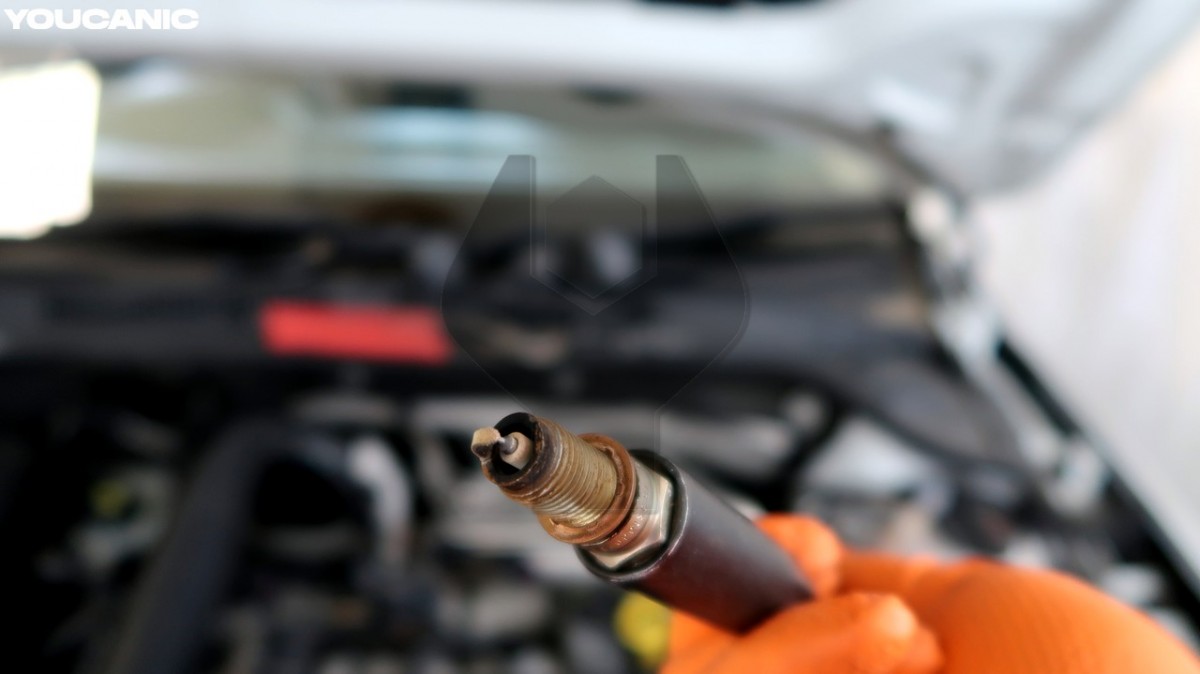
If the spark plugs are too old, they may be causing the misfire. The spark plug gap may be too large, or the resistor inside the spark plugs is damaged, and now they no longer ignite or burn the fuel that goes to that cylinder. When this happens, you will get a cylinder misfire code.
Your check engine light comes on, and if you scan the OBD-II codes, you will find out that you have one or more of the following systems:
- P0300 – Random/Multiple Cylinder Misfire Detected.
- P0301 – Cylinder 1 Misfire Detected.
- P0302 – Cylinder 2 Misfire Detected.
- P0303 – Cylinder 3 Misfire Detected.
- P0304 – Cylinder 4 Misfire Detected.
- P0305 – Cylinder 5 Misfire Detected.
- P0306 – Cylinder 6 Misfire Detected.
- P0307 – Cylinder 7 Misfire Detected.
- P0308 – Cylinder 8 Misfire Detected.
If you are wondering how to diagnose the check engine light, read our article on Check Engine Light. Once you confirm that you have an engine misfire, your first step is to replace the spark plugs, especially if they have never been changed.
Bad Ignition Coil
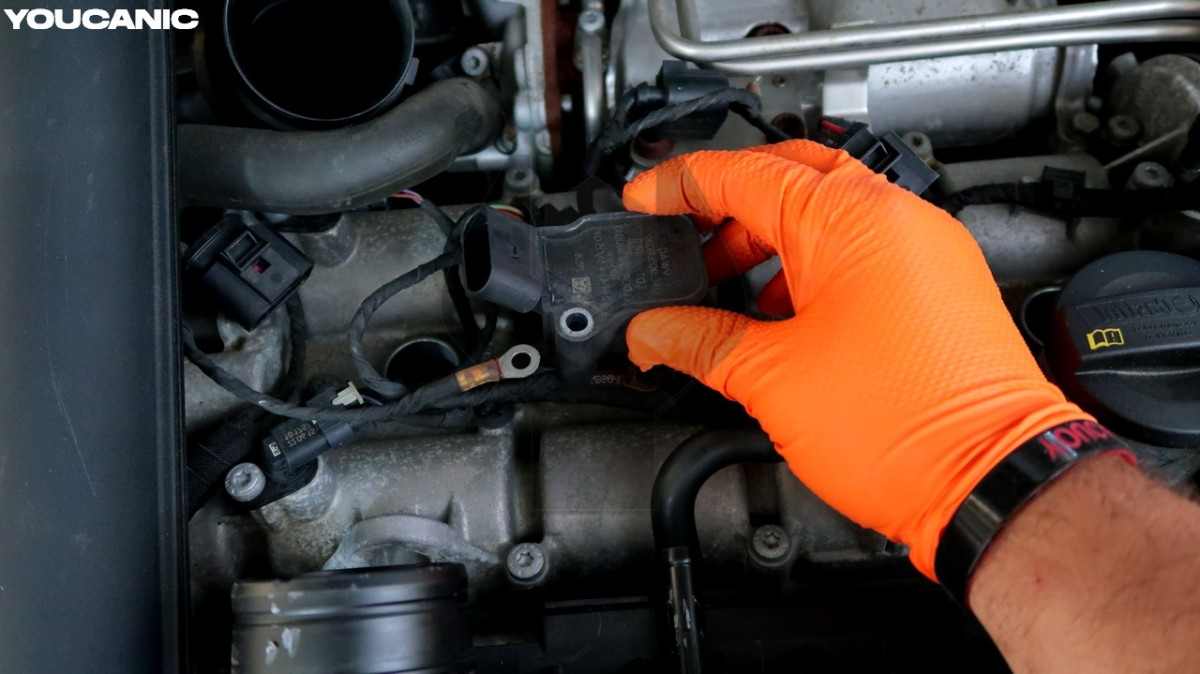
Ignition coils fail on some car models (Audi / VW, anyone?) more frequently than they should.
You should first swap the ignition coil on the cylinder, causing the problem with one that is not. So, if you are getting a P0302 code, Cylinder 2 is misfiring and causing the catalytic converter to overheat. Remove the ignition coil from cylinder two and swap it with the one you know is not the problem, say Cylinder 4. Before restarting the car, clear the codes using an OBD II code reader.

If you are getting P0304, the problem is moved to cylinder 4, so the ignition coil is the problem. If you are still getting a P0302 cylinder misfire, the problem is not the ignition coil, so we need to continue troubleshooting cylinder two misfires.
If you determine the issue is a bad ignition coil, replace the coil. You don’t need to replace all of the coils. Replacement ignition coils can be purchased online for any make and model.
Engine Control Unit
It is not uncommon for the Engine Control Unit (ECU) to fail, causing an overly rich fuel mixture. Don’t rush to replace the ECU, though. Often, the engine wire harness can be the problem.
ECUs are easy to replace but require programming by the dealer, and ECUs are expensive. The wire harness parts are less expensive but need over 10 hours of labor to replace most cars. While a lousy ECU or wiring harness can cause an engine misfire, resulting in catalytic converter overheating, such issues don’t occur very often.
Fuel Issue
You also have fuel issues, especially if you experience power loss and a red-hot catalytic converter. You may have excessive fuel pressure due to a failed fuel regulator or a damaged fuel injector.
If you suspect your problem is fuel-related, you can perform a fuel pressure test. On most cars, there is a fuel pressure test port on the fuel rail. Plug a fuel pressure gauge and measure the fuel pressure.
Burned or Bent Valves or Worn Rings
This is the worst-case scenario, and hopefully, not your case. But if you have any burned or bent valves or worn-out rings, there will be no compression at that particular cylinder. In return, the fuel/air mixture is not getting burned. The raw, unburned fuel goes out of the exhaust pipe and gets burned at the catalytic converter. This is typically a costly repair; you will need a mechanic’s help to fix such issues.
Other Problems
The problems that can cause your engine to run rich can continue. Other problems include the MAF sensor, oxygen sensor, and spark plug wire short. The distributor and spark plug wires could be problematic if you have an older car.
The ignition coil electrical socket can also get loose or unplugged from the ignition coil or pack. In some cars, oil could be between the ignition coil and spark plug due to a valve gasket oil leak. This can cause a short and, therefore, an engine misfire.
When this happens, the engine will shake excessively, and raw, unburned fuel will reach the catalytic converter and get burned there, causing the “cat overheating.”
What should I do if my catalytic converter glows red hot?
Before you change the catalytic converter, perform a couple of tests to determine if the catalytic converter is clogged. One standard test is used to determine if the catalytic converter is clogged to do an exhaust backpressure test. Any muffler shop can do a back pressure test, but you can also do this.
This test is straightforward. Get an Exhaust Back Pressure Tester Gauge. Unplug the upstream oxygen sensor and plug the gauge—Startup the car. Within minutes, you will see if excessive pressure is building up in the catalytic converter. Rev up the engine and hold the RPMs in 2000.
Catalytic converters can handle minuscule amounts of raw fuel, but not a significant amount can make it to the cat due to a misfire. If you have an engine problem, the check engine light is on. Read the fault codes with an OBD-II scanner, like the YOUCANIC Full System Scanner, via the diagnostic port under the dashboard.
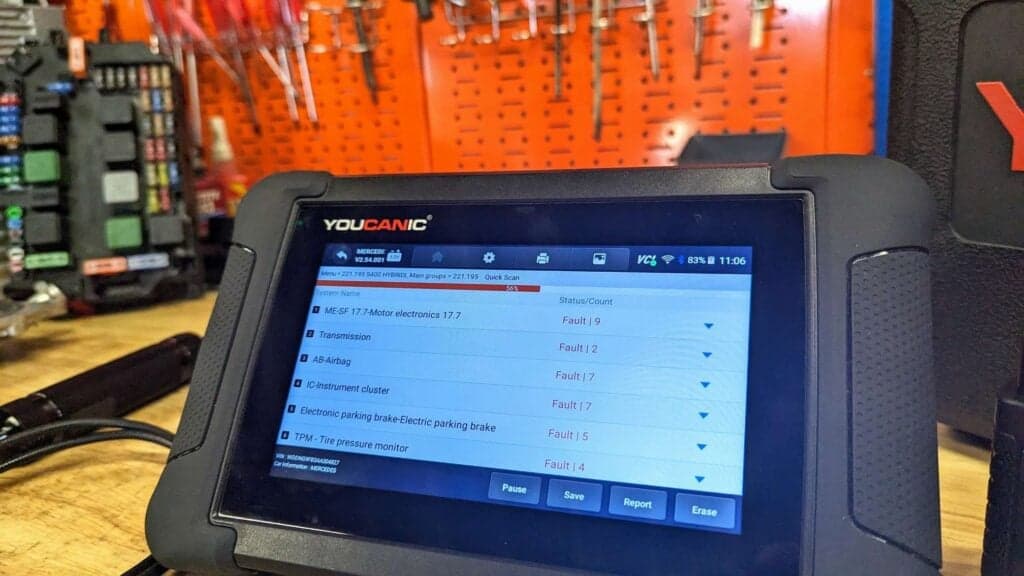
Can I drive if my catalytic converter glows red?
No. We would not recommend driving a vehicle if the catalytic converter is glowing red. Call an auto mechanic or dealer and ask for the next step.
Conclusion
If your catalytic converter is glowing red hot, have the vehicle diagnosed immediately. Do not ignore this problem, or you may cause expensive damage to the engine.
You have a problem with fuel not burning engine running rich, but you will damage your catalytic converter if you continue to drive this way. The converter is not going to last very long. The honeycomb material inside the catalytic converter will melt, clogging your catalytic converter. You may cause further damage to the engine itself.
We hope you find the Catalytic Converter Glowing Red Hot guide helpful. Check these troubleshooting and repair guides for more help on your vehicle.







Yeah same here on my 91 Toyota MR2. replaced all of the same items and mine still glows red as well and no check engine light.
My 2003 Mitsubishi eclipse gt 3.0 catalytic converter glowing red hot. I replace the converter spark plug ,fuel pressure regulator, map sensor ,iac also clean the throttle body and check for any crack hose.but still cat glowing red hot
im looking at cat glowing on right side why would it get so hot got good power